In these unfamiliar times of social distancing and self-isolation, many of us are frequently feeling anxious about the unknown.
Having some simple yoga poses in your tool box can be an effective way to keep you grounded and calm your mind and body. And best of all, they can be done at home.
In its new guidelines for how to deal with anxiety related to the coronavirus pandemic, the Harvard Medical School said yoga, meditation, and controlled breathing are “tried and true” ways to relax. Yoga in particular is a “natural anxiety relief,” and regular practice “can reduce the impact of exaggerated stress responses,” the school notes.
When the mind races with anxious thoughts the body tends to hold on to tension, but when we choose to focus on our breath and movement in yoga, we practice quieting the mind and are more easily able to let go.
We’ve rounded up some of our favourite and easy-to-do-at-home yoga poses below to ease anxiety and stress (it’s a great idea to check in with a health professional if you’re new to the practice to be aware of contraindications).
Use a yoga mat if you have one or a blanket or towel on your floor — just be mindful of slipping if you don’t have a grippy surface. Yoga props are also a lovely addition to your practice but can be replaced in a pinch with household items such as a stack of thick blankets, couch cushions, or sturdy pillows.
Savasana pose
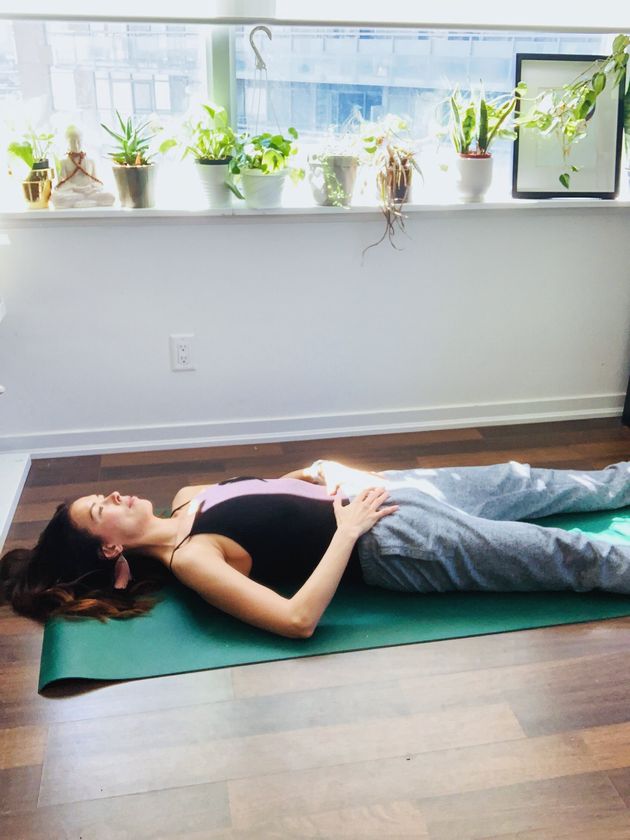
Probably the most important of all the asana (yoga poses), but often overlooked in its subtlety, savasana gives the body the opportunity to rest while releasing tension and calming the mind.
As a stand-alone pose, savasana works well to relieve anxiety as it requires you to lie down and find your breath, relaxing all of your muscles as you do so.
How to do it: Lie on your back with legs at least hip-width apart, feet falling open. Arms are at a comfortable distance from the body (45 degree angle) with palms facing upward. For those who feel particularly overwhelmed or stressed, placing the hands palms down on the belly while in this pose is a soothing way to find the breath and feel connected.
“Legs up the wall” pose
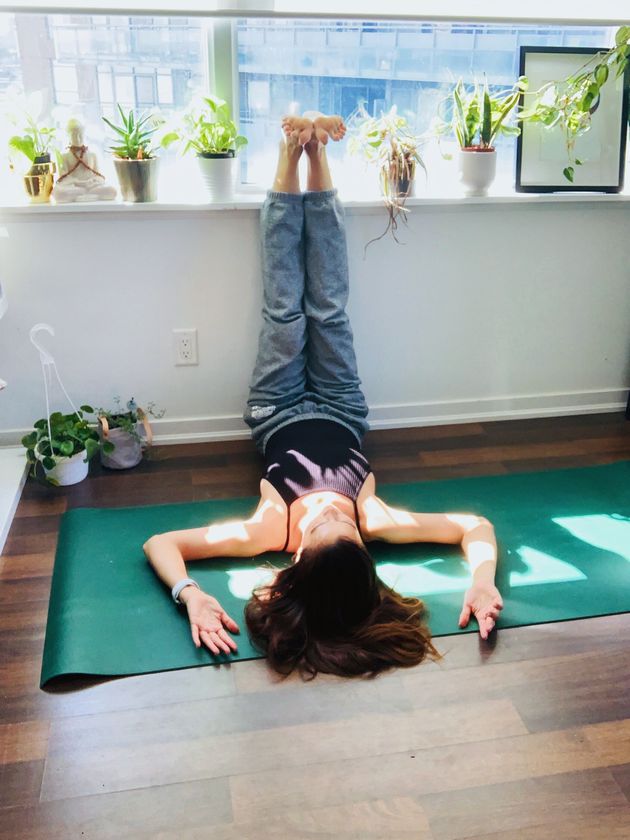
This simple pose is a wonderful way to wind down at the end of the day. Typically we spend the larger portion of our waking hours on our feet or seated upright — “legs up the wall” pose, where we lie on our backs with our legs extended up the wall, allows the blood to flow away from the feet and with gravity instead of against.
This pose can be particularly calming with the addition of an eye pillow or rolled up T-shirt placed over the eyes, and you can place a folded blanket or a bolster under the lower back for support.
How to do it: Lie on your back with your butt against a wall and legs extended straight up, and feet pointed at a 90 degree angle towards you (or also pointed upwards, whichever is most comfortable for you). Keep your arms outward from your body.
Roll gently to the side to come out of the pose, always being mindful of your movements.
Child’s pose
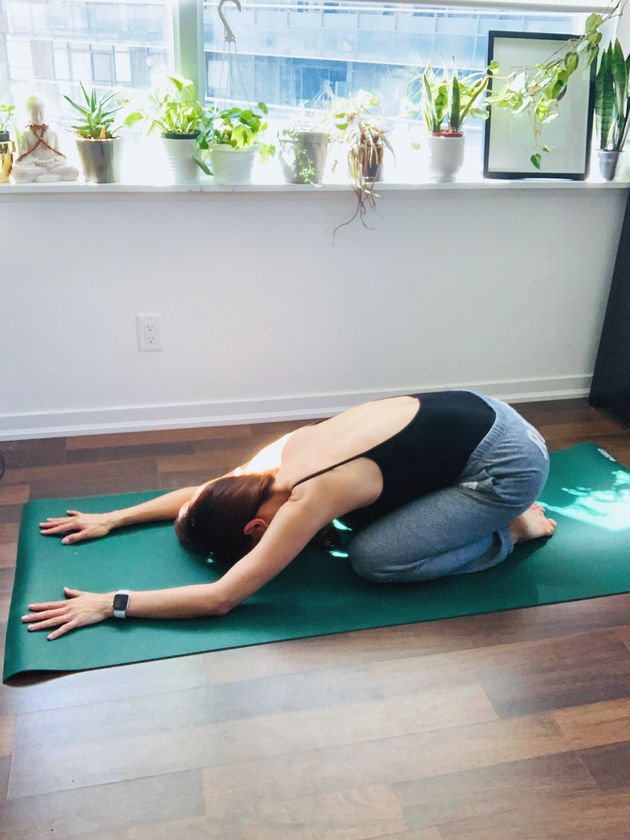
A gentle resting pose, child’s pose is a soothing position of surrender to your breath and to the earth.
How to do it: Invite yourself to fold forward and move your head towards the ground (a folded blanket can be placed underneath it if necessary).
Separate the knees to hip-width or wider to release tension from the hips — try placing a blanket under the knees or tops of the feet if you need additional support.
Tuning into the breath and the sensation of the earth supporting your body provides a calming opportunity to slow down.
Seated meditation
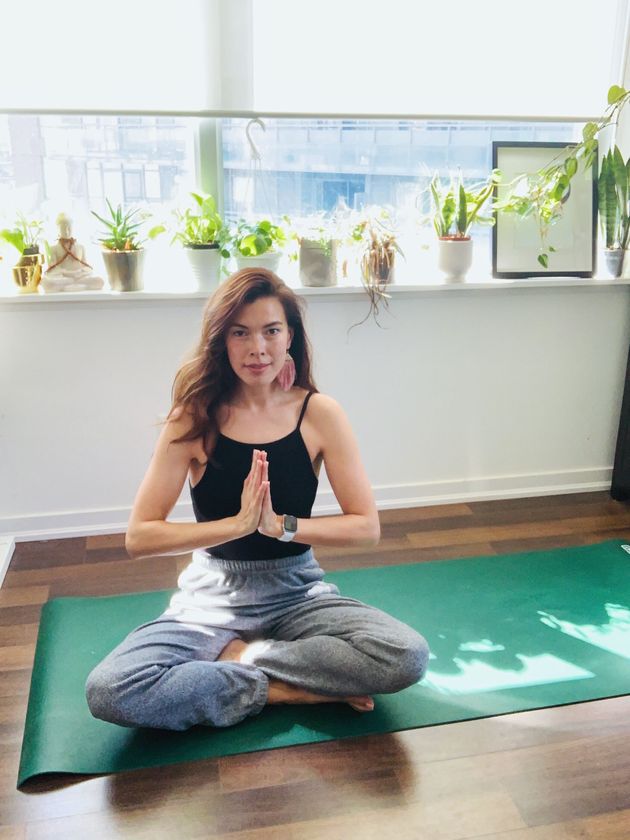
Sitting cross legged in meditation is a simple way to find stillness in the midst of uncertainty and chaos.
How to do it: The option of sitting towards the edge of a yoga block, a stack of blankets, or even the folded edge of your yoga mat allows you to tilt the pelvis and is a comfortable variation of this pose.
Try some simple breath work or pranayama (breath control) here: inhale for four counts, hold for four, and exhale for eight. You can also simply breathe in and out through the nose or out through the mouth doing your best to gently lengthen each exhale.
Find your breath and stay with it while you become aware of your sitting bones rooting to the earth. Embrace the sensation of feeling grounded and connected.
Bridge pose
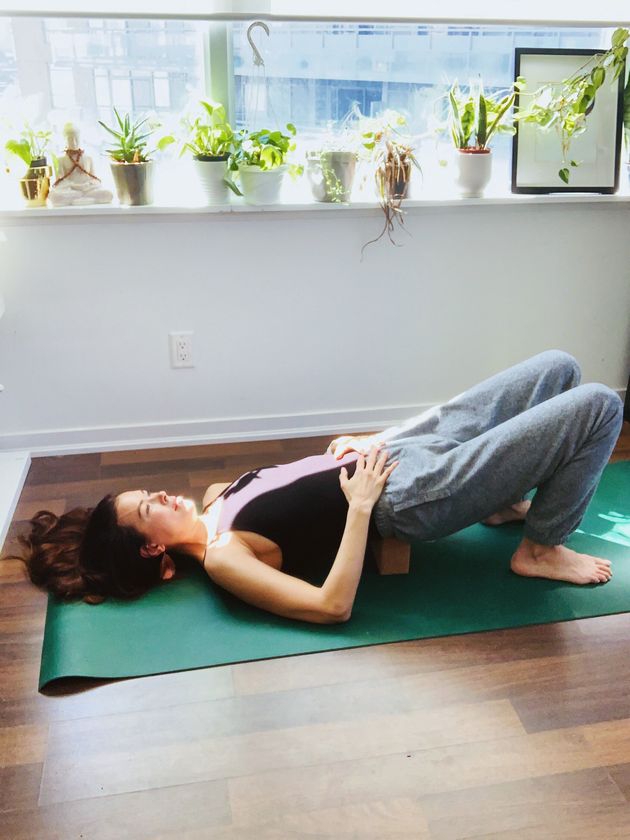
Heart-opening back bends are a beautiful way to help with anxiety and emotional stress.
When we are afraid, tense, or anxious, we have a tendency to physically close off and protect the heart centre, scrunching the body, and making it harder to take deep breaths.
Chest opening poses like bridge pose do the opposite — energetically, they open up the heart centre, and physically they create space for the lungs to expand, making it easier to breathe.
How to do it: Lie on your back with your legs bent and feet on the mat, hip-width apart. Inhale to lift the hips, rolling the arms under the body with fingers interlaced and hands and arms pressing into the earth.
Try this pose with some support (a block, a stack of blankets, or sturdy pillows will do the trick) under the sacrum (the base of the vertebrae) for a restorative variation, and bring the hands on to the belly to feel extra calm.


